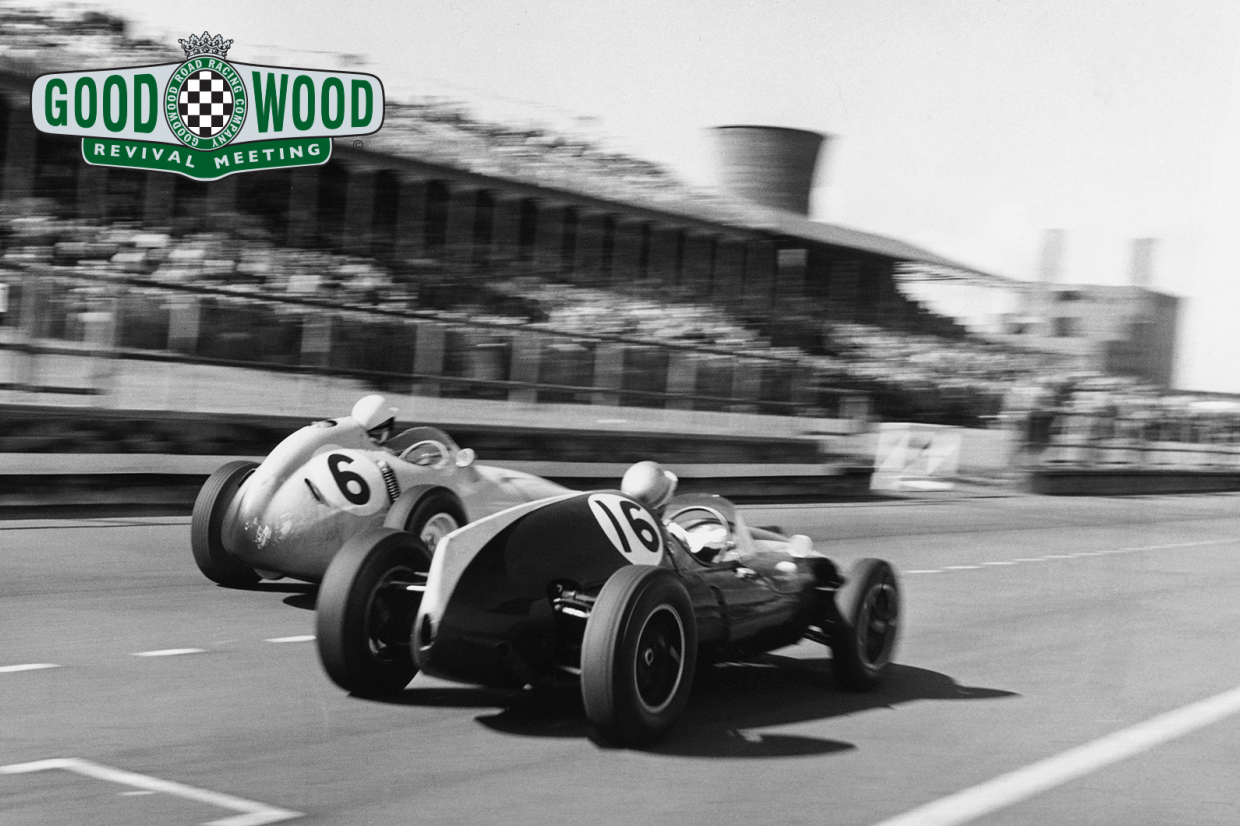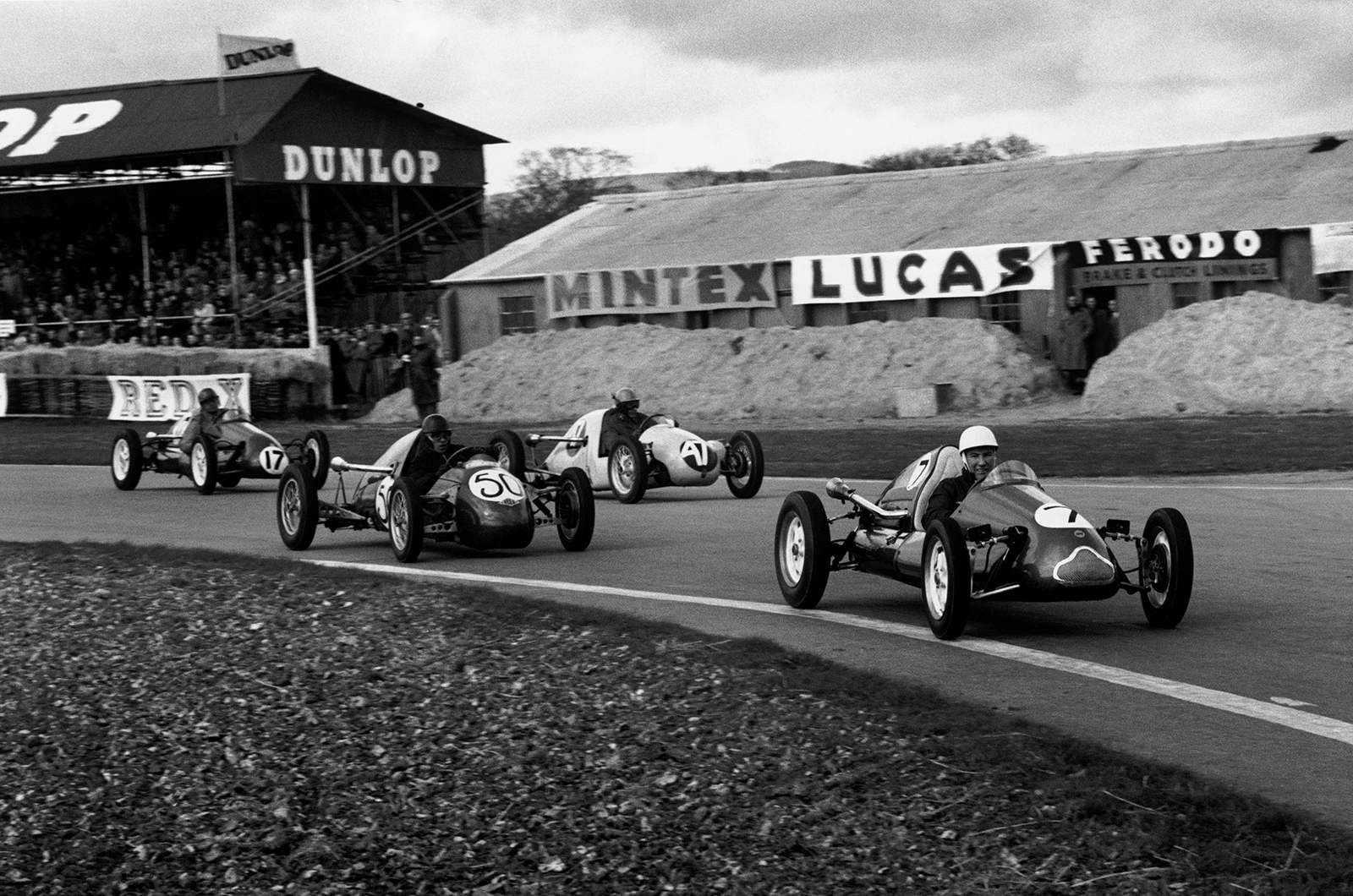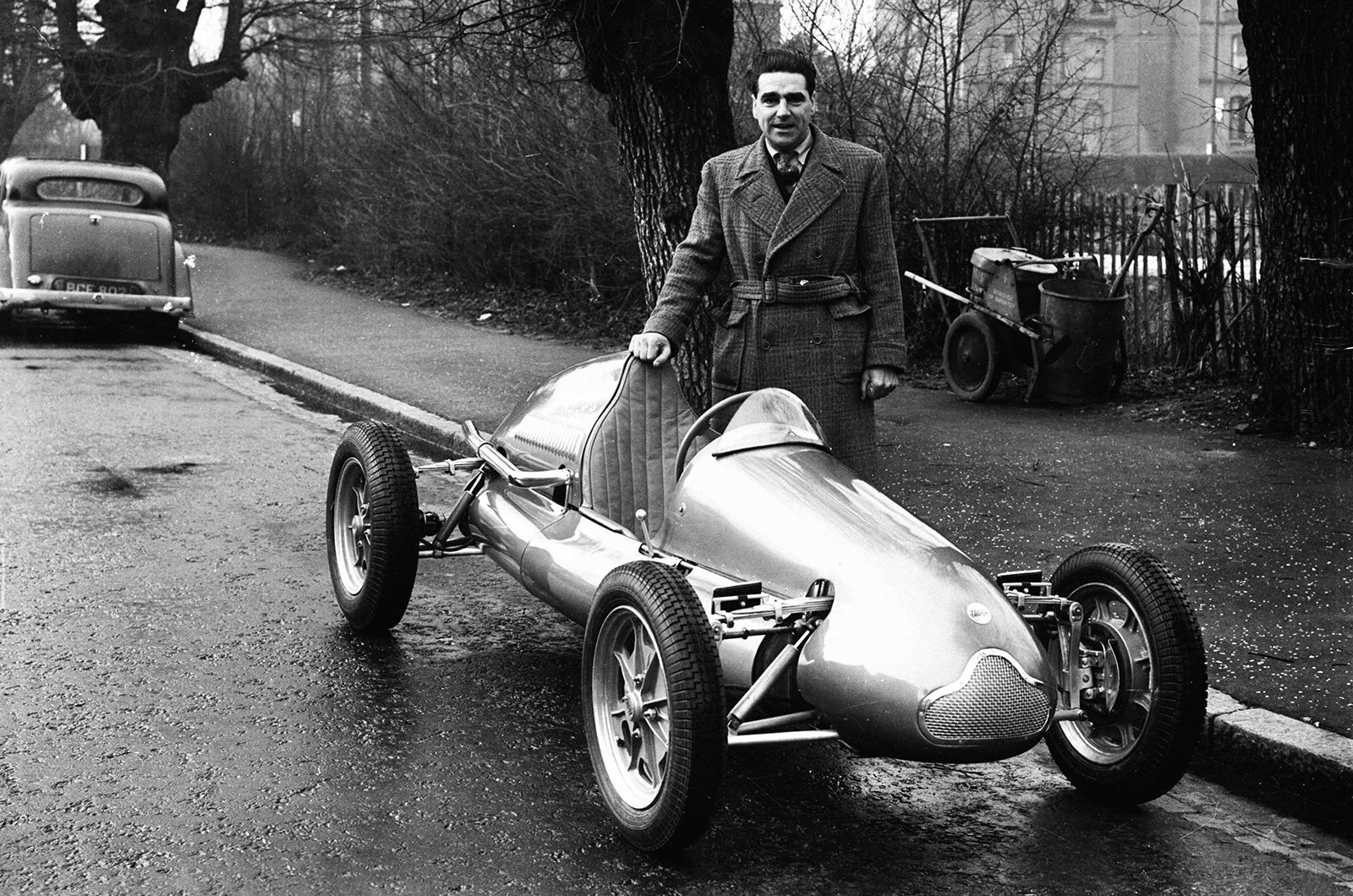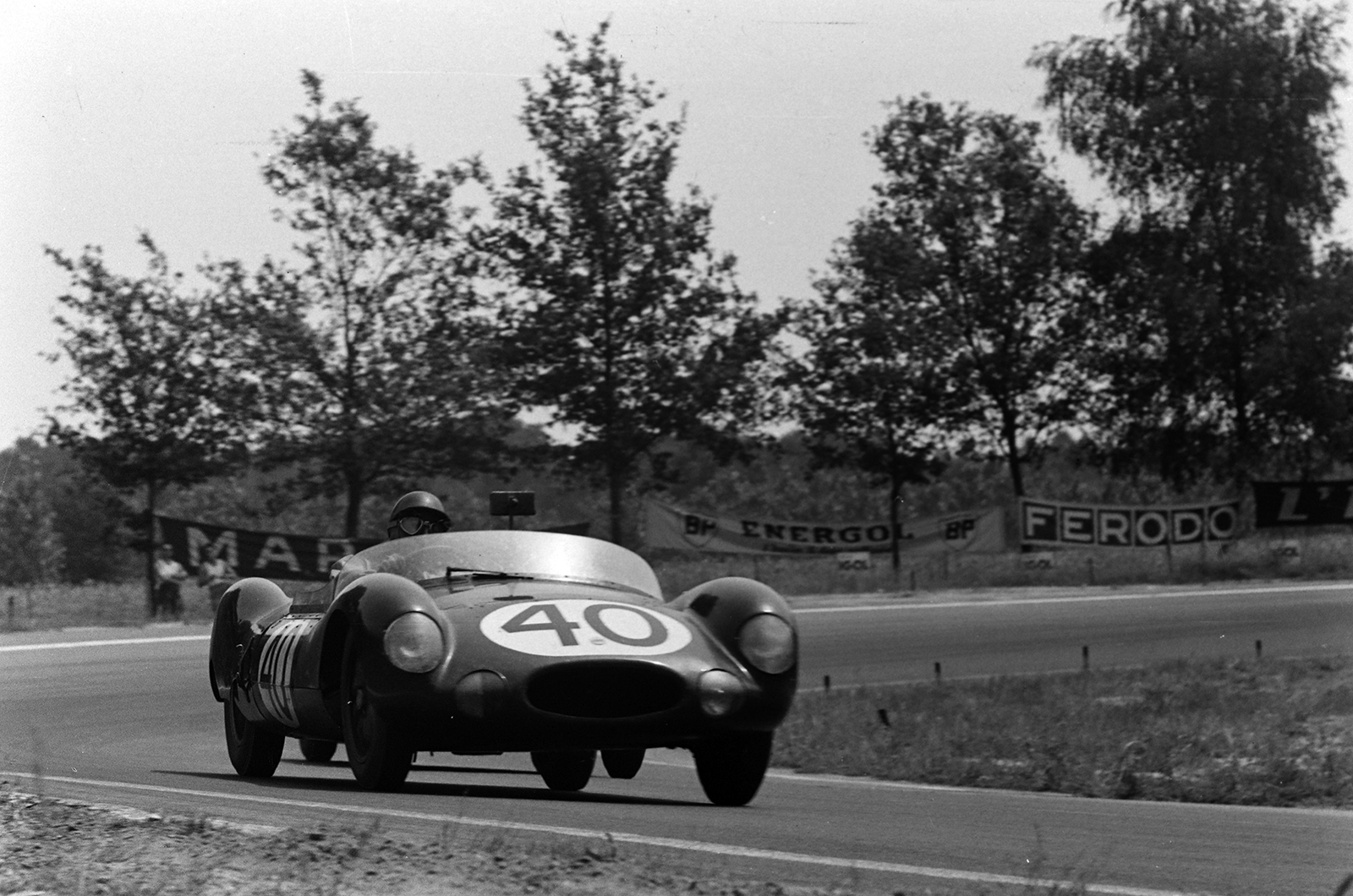
The 2019 Goodwood Revival will be awash with Coopers, 60 years since they ruled the world
John Cooper: 35.81 secs. Alec Issigonis: 37.50 secs. It’s 1946, motor racing is back and Cooper’s home-built (with his dad, Charles, in Surbiton) special has taken the 850cc class honours on the Brighton seafront ahead of a man who will make him more famous than would his own world-beating cars.
That special attracted attention and Coopers soon dominated the 500cc racing class, which became Formula Three.
Stirling Moss was among the first – with paycheck and to the flag – his engine cheap because his dentist dad ‘did the teeth’ of JAP’s Stan Greening.
At Goodwood’s inaugural meeting in 1948, Moss dominated so much he was told to slow by his father.

Stirling Moss leads a pack of rivals at Goodwood in 1953 in a 500cc Cooper-Norton MkVIII. He passed RG Bicknell for second at Woodcote on the last lap, but slipped to third
Formula One met its first Cooper in 1950, courtesy of Harry Schell, entering the history books as the first rear-engined car to start a Grand Prix.





